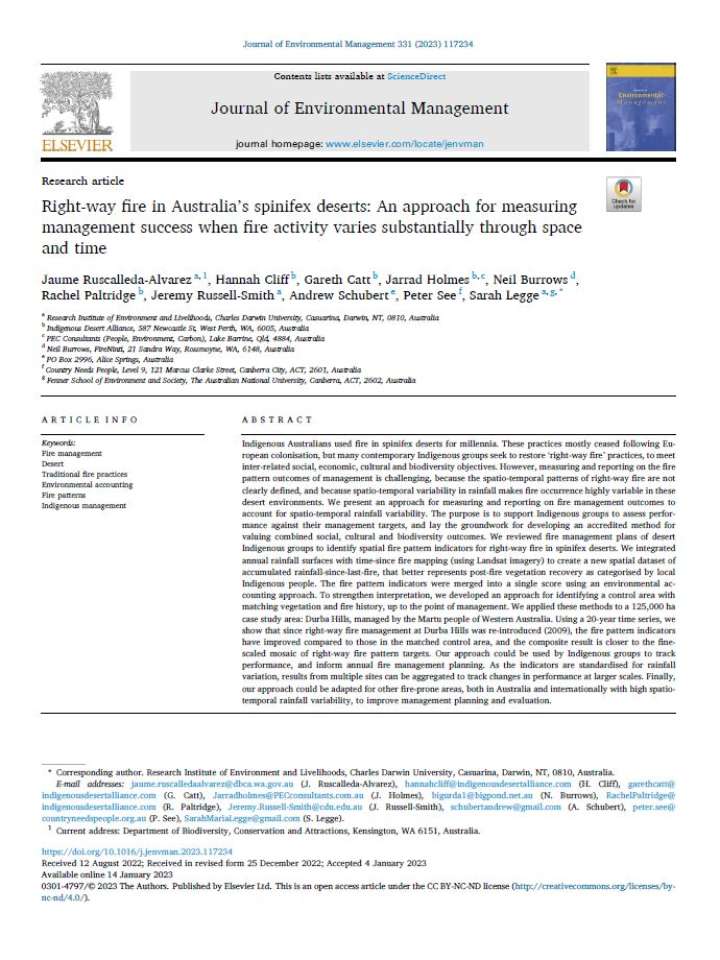Right-way fire in Australia's spinifex deserts: An approach for measuring management success when fire activity varies substantially through space and time
This paper presents an approach for measuring and reporting on fire management outcomes to account for spatio-temporal rainfall variability. Indigenous Australians used fire in spinifex deserts for millennia. These practices mostly ceased following European colonisation, but many contemporary Indigenous groups seek to restore ‘right-way fire’ practices, to meet inter-related social, economic, cultural and biodiversity objectives. However, measuring and reporting on the fire pattern outcomes of management is challenging, because the spatio-temporal patterns of right-way fire are not clearly defined, and because spatio-temporal variability in rainfall makes fire occurrence highly variable in these desert environments.
A consistent reporting approach for fire pattern outcomes from fire management in deserts has been challenging, because indicators of fire patterns that characterise right-way fire have not been defined; and because the high variability in rainfall, and thus fire intervals, across time and space have precluded a reporting approach that can be standardised. The authors selected fire pattern indicators that relate to descriptions of right-way fire shared across multiple desert Indigenous groups; then integrated rainfall into time-since-fire, and developed an approach to select a control area, so that comparisons in fire patterns across time and space can be more standardised. Our methods could be applied, with modification, to other fire-prone areas, in Australia or globally, with high spatio-temporal variability in rainfall, to improve annual reporting and to finesse annual fire management planning.
